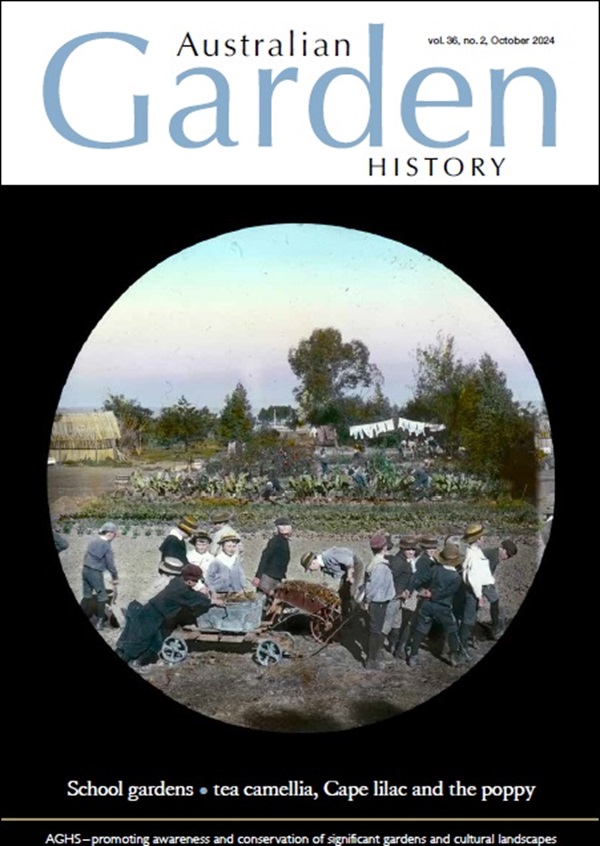Contents
Camellia sinsensis – the plant behind your cup of tea Jane Lennon
The foundation of your morning cuppa and have an ancient history that started out in the mountains of Yunnan, China. Tea came to Australia with the First Fleet in 1788 and is now grown in several plantations.
Professor Leslie Wilkinson: architect and garden maker Flavia Scardamaglia
Leslie Wilkinson (1882–1973) left a lasting and significant impact on architecture in Sydney and Australia. His pioneering and climate-conscious design innovations revolutionised the architectural profession in Australia. His work in founding the University of Sydney’s first Architecture faculty and developing its campus influenced the university for generations. Furthermore, his expert contributions to religious architecture as Diocesan Architect of the Anglican Diocese created landmark buildings throughout Sydney and beyond.
The Australian School Garden Movement – its golden age, 1890 to 1920 Sandra Pullman
The School Garden Movement was a mid- to late-19th century international movement in progressive education. School gardens were seen as a way to reconnect children to nature, enabling physical exercise and their development into moral adults.
Effie Douglas: she grew roses and planted trees Clare Gleeson
Effie Douglas, with her husband Douglas, were dedicated to beautifying Oamaru, New Zealand, and were active in the North Otago Horticultural Society and the Oamaru Beautifying Society.
Melia azedarach – a tree of so many names Caroline Grant
Melia azedarach is a beautiful and interesting tree with a long history of cultivation. Among many names, it is known as Persian lilac, Indian bead tree and chinaberry in Europe and North America, Arbor sancta or Arbor pareiso in Spain, bakain in India, marambung in Indonesia and mindi kecil in Malaysia and Singapore.
Papaver rhoeas – corn poppy, common poppy, the Flanders poppy John Dwyer
The poppy family (Papaveraceae) has some 200 species, including the California poppy (Eschscholzia californica), the floral emblem of that State; long‑headed poppy (Papaver dubium) and opium poppy (P. somniferum). All these species, including the corn poppy (P. rhoeas), are naturalised in Australia.
For the bookshelf: John Büsst: Bohemian Artist and Saviour of Reef and Rainforest by Ian McCalman Reviewed by Max Bourke
Here is a well written biography of a man who deserves to be much better known.
Profile Anna Long: elected member of the National Management Committee
Remarkable gardens: Highdown Stuart Read
Highdown, west of Bowral, is significant to the area because it is one of Bowral’s earliest surviving houses and has strong historic associations with Randolph Nott, Richard and May Crago and family who created its garden, and nurseryman and landscape designer, Claude Crowe. The garden retains some key early plantings and embellishment, including fine stonework, pleasing outlooks and sight lines as well as a collection of many unusual and some rare plants.
How a community effort saved the Station Street Precinct Bud Townsing
The AGHS Advocacy Toolkit suggests bringing in supporters at the start of the project and enrolling new allies as they emerge. The Australian Garden History Society can position itself as an important source of advice on matters regarding significant gardens and cultural landscapes, including using the AGHS Advocacy Toolkit. This worked in the Southern Highlands to save a heritage precinct from a proposed road development.
AGHS national oral history collection Tim Hughes and Sal Molesworth
Tim Hughes and Sal Molesworth moved to Lilburn, near Glen Innes, NSW, in 2000. Tim and Sal were interviewed by Liz Chappell and Lynne Walker in May 2024.


